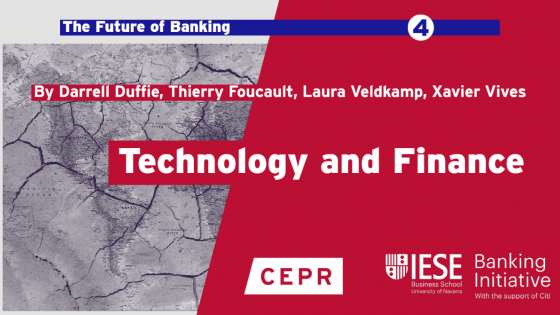Stock charts and any patterns stemming from them can be extremely complex and difficult to interpret. Investors spend millions of dollars analysing market data to better understand and hopefully profit from these patterns (for example, through technical analysis and algorithmic trading), but standard economic theory has ignored this reality. Received literature (e.g. Grossman and Stiglitz 1980, Hellwig 1980, Vives 2008, Banerjee 2011) assumes that market participants are highly sophisticated and know the exact relationship between fundamentals and prices. Investors perfectly comprehend the price function and thus can costlessly read into the asset price to uncover value-relevant information (Corsetti et al. 2019 argue that high-frequency trading makes the information that traders can extract from prices noisy). This literature also assumes that all investors are equally sophisticated with no differences among them in terms of experiences, abilities, or knowledge about markets. The fact that real-world investors are not only different but also expend tremendous amounts of resources to better understand markets implies that the assumption that market participants understand entirely the market environment does not represent well the real world (see Duffie et al. 2022 for an analysis of the value of data in financial markets). What if interpreting price information is costly and investors commit errors in the inference process? How can we determine the sophistication levels of investors in interpreting asset prices? How does investor sophistication affect market prices and trading volume?
In a recently published paper (Mondria et al. 2022), we develop a framework to relax these economic assumptions and answer the important questions raised above. The framework allows investors to observe prices for free (as with Google or Yahoo Finance in reality) but requires investors to exert effort to understand precisely how those prices relate back to the fundamentals of companies. This effort reveals the underlying relationship that investors can then use to guide their trading strategies. Effort can be broadly interpreted as expending resources to either learn, analyse, or generally better understand the relationship between prices and fundamentals. Investors choose the level of effort to exert endogenously and then act upon the resulting information they acquire.
Our framework can be interpreted from a behavioural perspective. Each investor has two selves. There is a self who builds an understanding of how the market works and chooses the sophistication level of the investor. Then there is another self who is bounded rationally and adds noise when interpreting the information contained in the price. Although throughout our paper we follow this behavioural interpretation based on individual investors, we can alternatively interpret the two selves of our investors as the research department and trading desk of an investment institution. The trading desk is responsible for trading assets, and it relies on the institution’s research department to improve its understanding of how to generate information from prices. Research departments describe the procedure of how to extract the best signal from prices in the form of research reports, but trading desks add noise in comprehending the procedures in the reports.
Modern markets have exhibited anomalies which should not exist if the standard economic theory holds true. These anomalies include price momentum (future returns depend positively on the current price), excessive return volatility, and excessive trading volume. They have been consistently observed empirically, but they are not easily explained theoretically under standard economic theory (e.g. Jegadeesh and Titman 1993, Odean 1999, Barber and Odean 2000, Moskowitz et al. 2012). Our framework provides an explanation for these effects and shows that the anomalies can come from costly interpretation of asset prices.
Let us use price momentum as an example to explain how our mechanism works. Specifically, when investors have limited funds to analyse price data, they will not be able to acquire all information and understand the entire relationship between prices and the fundamentals. Partial understanding means that investors are not fully incorporating all available information. When their trading is aggregated, prices will underreact to information, which will in turn lead to the price momentum anomaly.
In addition, our framework allows us to examine the choice of the level of sophistication of investors. The trade-off involved in sophistication is as follows. Increasing sophistication improves investors’ ability to interpret market data, but acquiring sophistication is costly. The choice of sophistication level leads to strategic complementarities, whereby the incentives that investors face to acquire more information are positively related to how sophisticated the average investor is. The more sophisticated the average investor, the more incentive there is for a new investor to acquire information. Intuitively, sophisticated investors who spend millions of dollars analysing market data have larger incentives to do so when their peer group is also spending millions of dollars analysing markets.
The strategic complementarity and other results in our paper are mainly driven by the ‘noise’ added to the price signal when investors interpret the information contained in the price. To illustrate this noise, consider the following two extreme examples. First, if investors were the least sophisticated they could possibly be, then their trading would resemble white noise (i.e. randomness) because nothing is informing their decisions. The randomness of trading would aggregate to prices that do not reflect the fundamentals at all, which is the extreme case of noisy prices. Second, if investors were as sophisticated as they could possibly be, then prices would exactly convey all information about the fundamentals and there would be no noise. In reality, investors lie on a spectrum between these two extremes and this noise is precisely the reason why there is strategic complementarity. As investors develop better algorithms for interpreting price data, the ‘noise’ in prices would decrease as the investors become better at understanding the relationship between price and fundamentals. This smaller noise implies that prices are more informative than they once were, which in turn will incentivise investors to devote more resources to studying prices, since price data are now more valuable.
A major contribution we make is a framework that connects a financial economic theory to long-standing empirical results. This framework allows theory to adapt and then explain effects previously seen as anomalies that should not exist under the standard economic theory. The framework provides theoretical underpinnings for some of the most well-known anomalies in finance, such as the momentum pattern in asset returns. Our paper also touches on how the framework can be aggregated to explain trends in the asset management industry, such as herding and ever-increasing levels of sophistication through the strategic complementarity effect. Future research can use the framework to better understand financial markets and add nuances to empirical results rather than writing off their existence as anomalous.
References
Banerjee, S (2011), “Learning from Prices and the Dispersion in Beliefs”, Review of Financial Studies 24: 3025-3068.
Barber, B and T Odean (2000), “Trading Is Hazardous to Your Wealth: The Common Stock Performance of Individual Investors”, Journal of Finance 55: 773-806.
Corsetti, G, R Lafarguette and A Mehl (2019), “Fast trading and the virtue of entropy”, VoxEU.org, 13 August.
Duffie, D, T Foucault, L Veldkamp and X Vives (2022), “The impact of technology on finance”, VoxEU.org, 27 May.
Grossman, S and J Stiglitz (1980), “On the Impossibility of Informationally Efficient Markets”, American Economic Review 70: 393-408.
Hellwig, M (1980), “On the Aggregation of Information in Competitive Markets”, Journal of Economic Theory 22: 477-498.
Jegadeesh, N and S Titman (1993), “Returns to Buying Winners and Selling Losers: Implications for Stock Market Efficiency”, Journal of Finance 48: 65-91.
Mondria, J, X Vives and L Yang (2021), “Costly Interpretation of Asset Prices”, Management Science 68: 52-74.
Moskowitz, T, Y H Ooi and L H Pedersen (2012), “Time Series Momentum”, Journal of Financial Economics 104: 228-250.
Odean, T (1999), “Do Investors Trade Too Much?”, American Economic Review 89: 1279-1298.
Vives, X (2008), Information and Learning in Markets: The Impact of Market Microstructure, Princeton University Press.






